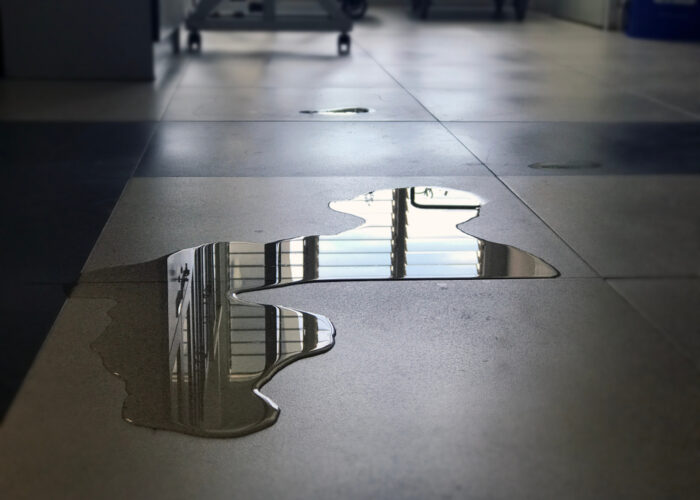
How to Make a Successful Water Leak Insurance Claim
Water damage is one of the most common and costly problems homeowners face. Whether it’s a burst pipe, a leaking roof, or a flooded basement, water damage can lead to significant property loss, expensive repairs, and potential health risks from mold growth. When a water leak occurs, filing a successful insurance claim is crucial to recovering the costs of repairs and restoration. However, the process can be complex and overwhelming.
Understanding Your Insurance Policy
Before a water leak occurs, it’s essential to understand your homeowner’s insurance policy. Not all policies cover water damage and those that do often have specific terms and conditions. Here are some key points to review:
Types of Water Damage Covered
Insurance policies typically cover certain types of water damage but exclude others. Commonly covered events include:
- Sudden and Accidental Discharges: This includes situations like a burst pipe, an overflowing toilet, or a broken appliance that causes water to leak unexpectedly.
- Storm-Related Water Damage: Damage caused by rainwater entering your home due to roof damage or a storm.
Exclusions might include:
- Gradual Damage: This is damage that occurs over time, such as slow leaks that lead to mold growth. Gradual damage is often not covered because it is considered preventable with proper maintenance.
- Flooding: Standard homeowner’s insurance usually does not cover flood damage. You would need separate flood insurance for this.
Understanding Deductibles and Limits
Your policy will have a deductible, which is the amount you must pay out of pocket before the insurance coverage kicks in. Additionally, there may be limits on how much the insurance company will pay for specific types of damage. Understanding these details will help you prepare for the financial implications of a water leak.
Immediate Steps to Take After Discovering a Water Leak
When you discover a water leak, quick action is essential to minimize damage and ensure a smooth claims process. Here are the immediate steps to take:
Stop the Water Source
The first step is to stop the water from continuing to damage your property. If the leak is from a broken pipe, shut off the main water supply to your home. For leaks caused by roof damage, use tarps or other materials to temporarily block water entry until professional help arrives.
Document the Damage
Thorough documentation is critical when filing a successful water leak insurance claim. Use your smartphone or camera to take photos and videos of the damage. Make sure to capture the source of the leak, the affected areas, and any damaged belongings. This evidence will be vital when you present your case to the insurance adjuster.
Mitigate Further Damage
Most insurance policies require you to take reasonable steps to prevent further damage to your property after a leak. This could include drying out wet areas, moving furniture and belongings to prevent further damage, and using fans or dehumidifiers to reduce moisture. Keep all receipts and records of any expenses incurred during this process, as they may be reimbursable.
Notify Your Insurance Company
Contact your insurance company as soon as possible to report the water leak and begin the claims process. Provide them with a detailed account of the incident, including when the leak was discovered, the extent of the damage, and the steps you’ve taken to mitigate further damage. Be honest and thorough in your communication to avoid potential complications later in the process.
Working with an Insurance Adjuster
Once you’ve reported the water leak to your insurance company, they will assign an adjuster to your case. The adjuster’s role is to assess the damage, determine the cause, and estimate the cost of repairs. Here’s how to navigate this part of the process effectively:
Prepare for the Adjuster’s Visit
Before the adjuster arrives, ensure you have all relevant documentation ready, including photos, videos, receipts, and a list of damaged items. Being organized and prepared will help you present a strong case.
Be Present During the Inspection
It’s important to be present when the adjuster visits your property. Walk them through the damage, explain the sequence of events, and provide any additional information they may need. This is your opportunity to ensure that all damage is accurately recorded and that nothing is overlooked.
Get an Independent Estimate
While the insurance adjuster will provide an estimate of the repair costs, it’s a good idea to get an independent estimate from a trusted contractor. This can serve as a valuable comparison and ensure that the insurance company’s offer is fair and adequate to cover the necessary repairs.
Filing the Insurance Claim
After the adjuster’s visit, the next step is to file your official insurance claim. Here’s how to ensure that your claim is successful:
Complete the Necessary Forms
Your insurance company will provide you with the forms needed to file your claim. Fill these out carefully, providing all requested information and attaching the documentation you’ve collected. Double-check everything for accuracy to avoid delays in processing.
Keep Detailed Records
Throughout the claims process, keep detailed records of all communications with your insurance company, including emails, letters, and phone calls. Note down the names of the representatives you speak with, the date and time of each interaction, and a summary of the conversation. This record can be invaluable if any disputes arise.
Follow Up Regularly
Insurance claims can take time to process, but staying proactive is important. Follow up with your insurance company regularly to check on the status of your claim. If there are any delays or issues, address them promptly.
Handling Disputes and Denials
Unfortunately, not all water leak insurance claims are approved without issue. If your claim is denied or if you disagree with the settlement offer, here are the steps to take:
Understand the Reason for Denial
If your claim is denied, the insurance company is required to provide a written explanation. Review this explanation carefully to understand the specific reason for the denial. It could be due to a policy exclusion, lack of proper documentation, or another issue.
Dispute the Decision
If you believe your claim was wrongfully denied or the settlement offer is too low, you have the right to dispute the decision. Start by contacting your insurance company to discuss the issue. Provide any additional evidence or documentation that supports your case. If necessary, you may also consider hiring a public adjuster or attorney specializing in insurance claims to help you negotiate a fair settlement.
Consider Mediation or Arbitration
If direct negotiations with your insurance company don’t resolve the dispute, you may be able to pursue mediation or arbitration. These alternative dispute resolution methods involve a neutral third party who can help facilitate a fair settlement without the need for litigation.
Preventing Future Water Damage
While dealing with a water leak can be stressful, it’s also an opportunity to take preventive measures to avoid future incidents. Here are some steps you can take to protect your home from water damage:
Regular Maintenance
Conduct regular inspections of your home’s plumbing, roof, and foundation to identify and repair any potential issues before they become major problems. Pay special attention to areas that are prone to leaks, such as bathrooms, kitchens, and basements.
Install Water Leak Detection Devices
Water leak detection devices can alert you to leaks immediately, allowing you to take immediate action. Some devices can even shut off the water supply automatically to prevent further damage.
Upgrade Plumbing and Appliances
If your home has old or deteriorating plumbing, consider upgrading to newer, more durable materials. Additionally, outdated appliances should be replaced with models that are less likely to leak.
Maintain Proper Drainage
Ensure that your home’s gutters, downspouts, and drainage systems function properly to prevent water from accumulating near your foundation. Proper drainage is key to preventing basement flooding and other water-related issues.
Ahold of Mold Environmental Can Help
Dealing with a water leak and filing an insurance claim can be overwhelming, but you don’t have to go through it alone. At Ahold of Mold Environmental, we have a team of experts, including environmental hygienists, drainage contractors, engineers, architects, remediation contractors, and indoor air quality specialists, who can help you every step of the way. From diagnosing the source of the leak to repairing the damage and preventing future issues, we’re here to ensure that your home is safe, healthy, and mold-free.
As a family-owned and operated company with over two decades of experience, we understand the importance of protecting your home and your family. We stay current with the latest industry standards and technologies through continuing education so you can trust that you’re getting the best service possible.
If you’re in Buffalo, Kenmore, or Erie County, NY, call us today at 716-898-8143 to learn more about our capabilities. Don’t wait until water damage becomes a bigger problem—schedule an on-site mold inspection and indoor air quality test with us today. Let us help you protect your home and ensure a successful water leak insurance claim.
Categorised in: Water Damage Restoration


